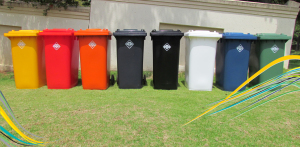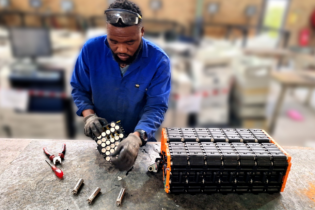 Big events generate a lot of waste. So much so that nine truckloads of plastic waste was collected at this year’s Two Oceans Marathon.
Big events generate a lot of waste. So much so that nine truckloads of plastic waste was collected at this year’s Two Oceans Marathon.
The 2016 Two Oceans Marathon attracted almost 30 000 athletes – that’s a lot of water sachets to keep track of, especially considering each refreshment point received 20 000 bags and the route had 23 of these stations. This was the job of John Kieser, Sustainability Manager at Plastics SA,
PETCO and the team of 205 workers.
Plastics SA and PETCO are ‘greening’ major events this, creating awareness of the mountains of litter generated at big events such as the Cape Argus Cycle Race and the Old Mutual Two Oceans Marathon, and encouraging effective clean-up campaigns during and after the events.
Five steps for event waste management
According to the Waste Minimisation Guide published by the Government of South Australia, there are five steps to successfully managing waste at your events.
- Develop a waste management plan
It is important to plan how waste will be managed well before an event, as an effective waste management plan (WMP) provides the best chance of meeting your waste reduction goals.
Everyone involved should be clearly assigned actions and responsibilities, ensuring an effective and consistent approach. Waste stream management should also be addressed and goals set.
- Gain commitment
Getting all parties involved in the event on board will assist is waste management efforts. Staff, sponsors, contractors, and vendors should all be made aware of the goals and actions for waste management. A more formal way to ensure commitment is by including contractual arrangements in service contracts and agreements.
- Provide infrastructure
You need to work out the number of bins you will need, and their system and placement, for your event. In doing this you need to consider the different waste and recycling streams that will be generated. Clear signage for bins using a combination of words and images are vital to success.
- Educate and market
All staff and associated personnel working on an event must understand why a WMP has been developed and their role in implementing it. Promoting your waste minimisation goals among patrons can also largely affect the success of waste minimisation measures implemented. Clearly indicating the different bin systems in place will also help people use them correctly.
- Report and evaluate
Reporting and evaluating your waste minimisation actions and the success of your WMP are vital for continued success. Here you can track your successes and improvements and report what you have learnt and achieved to all relevant parties. Doing this may also provide continued allocation of resources to waste management.
For more detailed information consult the Waste Minimisation Guide
here.
 Big events generate a lot of waste. So much so that nine truckloads of plastic waste was collected at this year’s Two Oceans Marathon.
Big events generate a lot of waste. So much so that nine truckloads of plastic waste was collected at this year’s Two Oceans Marathon.







